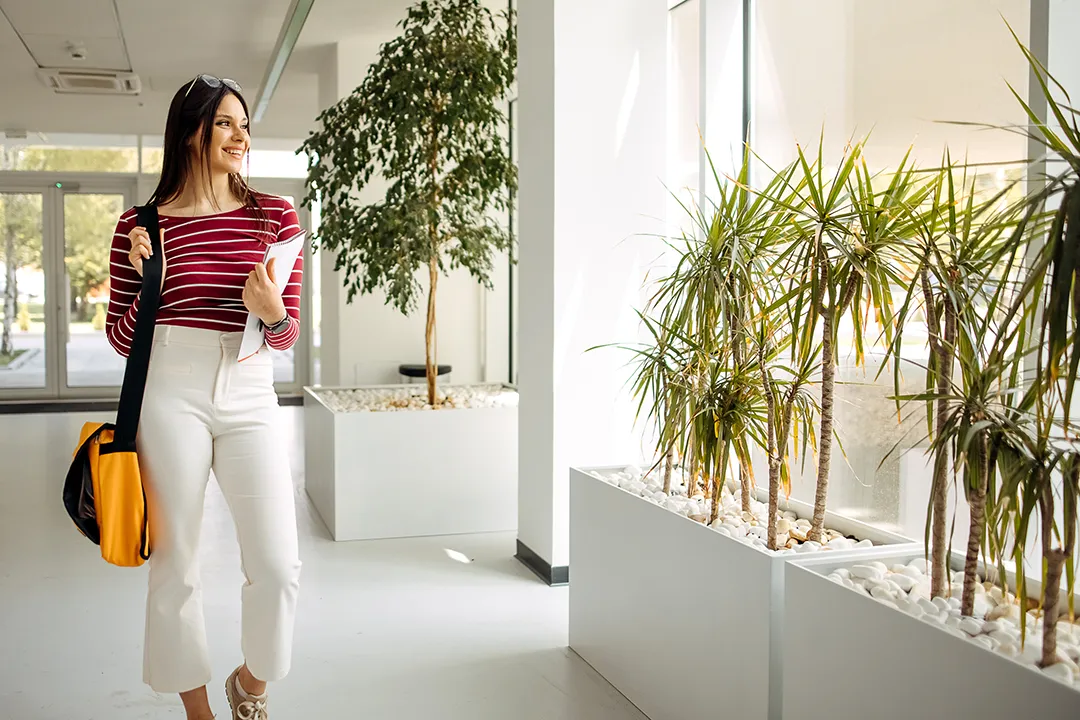
In recent years, biophilic design has become a transformative trend on college campuses across the United States. Emphasizing a deep connection to nature, biophilic design incorporates natural elements like plants, water, natural light, and open spaces to create environments that nourish the mind and spirit. The benefits are clear: both students and faculty experience enhanced well-being, greater focus, and increased satisfaction when surrounded by nature-inspired spaces.
As universities look to the future, particularly in unique climates like Arizona, there’s a growing opportunity to bring more native plants and natural elements into campus design. This post explores notable examples, the benefits of biophilic design for learning, the importance of natural light, and Arizona’s potential to lead the way in desert-friendly biophilic innovation.
Inspiring examples of biophilic design on college campuses
From expansive green roofs to living walls, colleges and universities are incorporating biophilic design in ways that go beyond traditional landscaping.
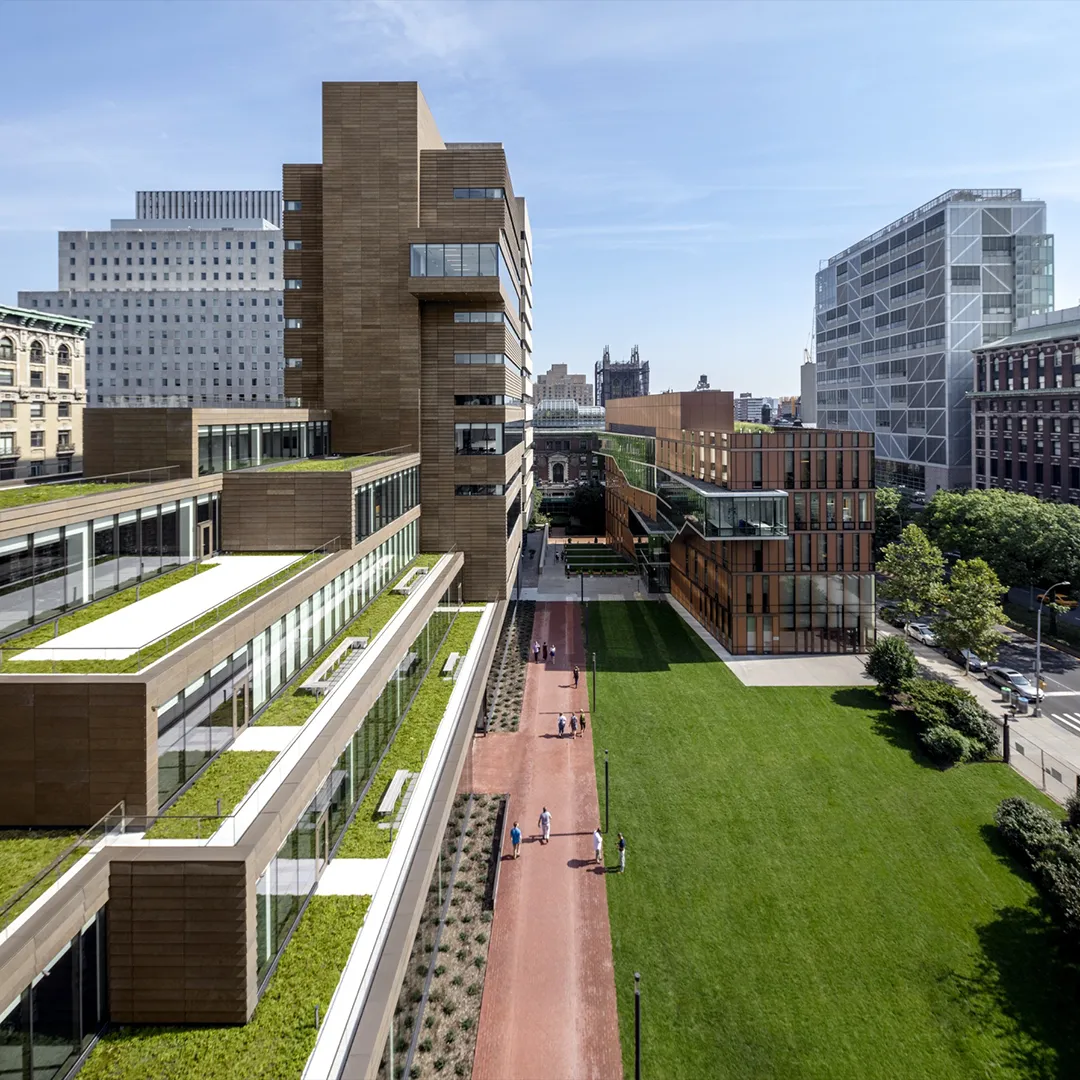
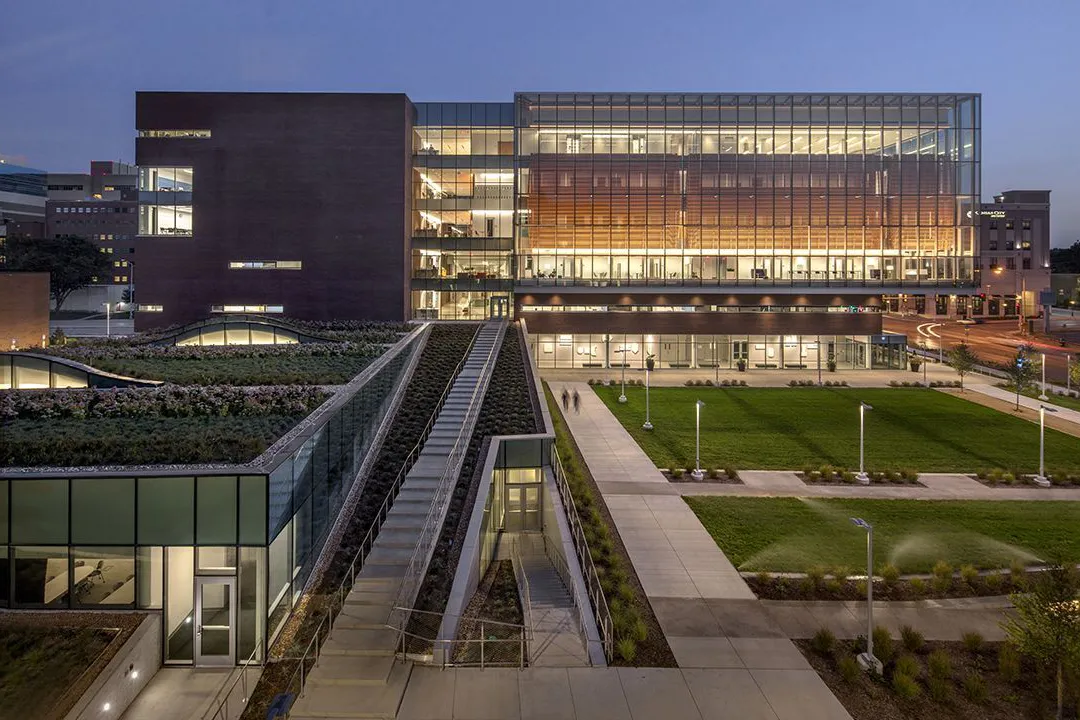
- The Milstein Center for Teaching and Learning at Barnard College (New York):
Created by Skidmore, Owings & Merrill, the Milstein Center features an extensive green roof with native plants that provide outdoor study spaces for students. The rooftop area beautifies the urban landscape and supports local biodiversity. The roof is a lush oasis above the city, with seating areas where students can relax and study. The green roof also contributes to stormwater management and provides insulation, supporting Barnard’s sustainability goals.
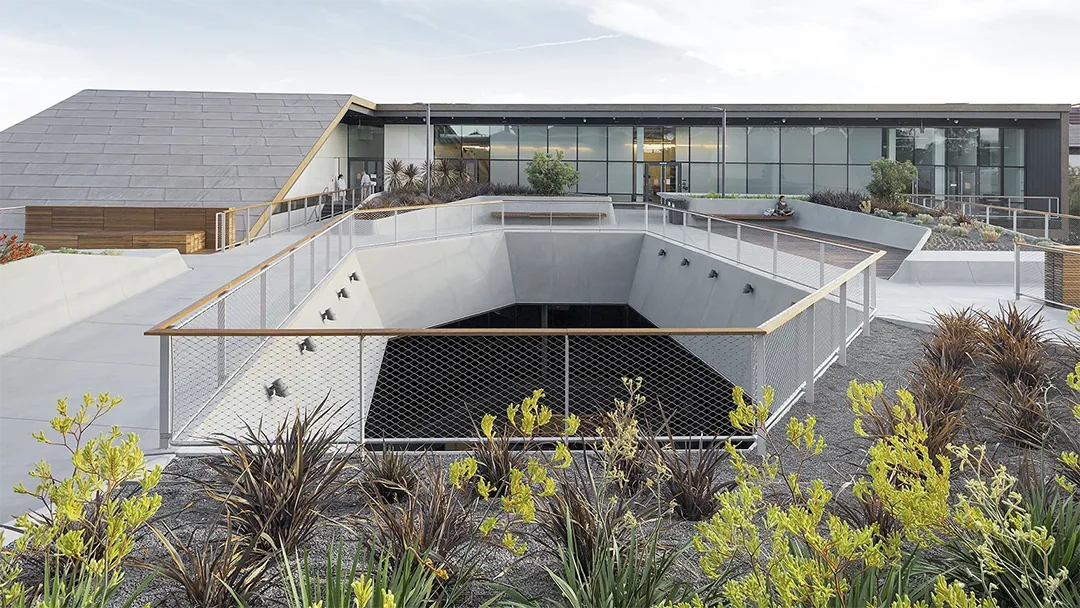
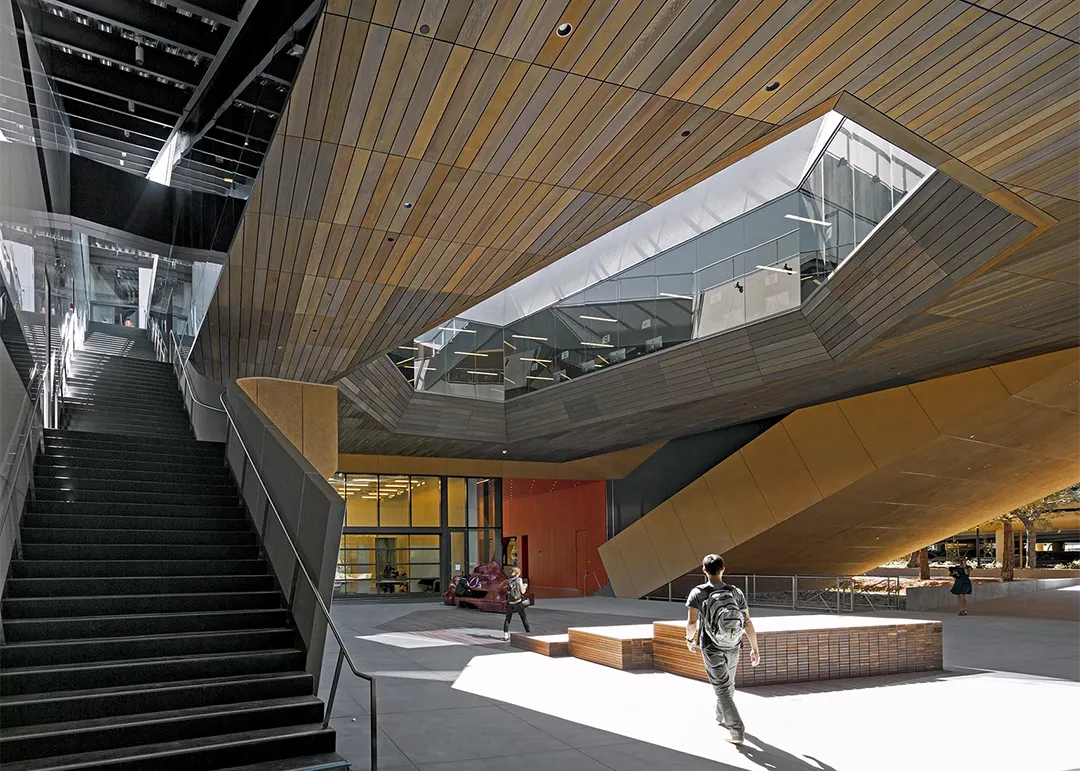
- McMurtry Building for Art and Art History at Stanford University (California):
Designed by Diller Scofidio and Renfro, the McMurtry Building is renowned for its use of natural light. The building is structured with large windows and skylights that reduce the need for artificial lighting and create a bright, uplifting environment. Sunlight pours into open study areas, and the surrounding green spaces create an indoor-outdoor feel. The design invites students to feel connected to nature while working in an open, creative setting.
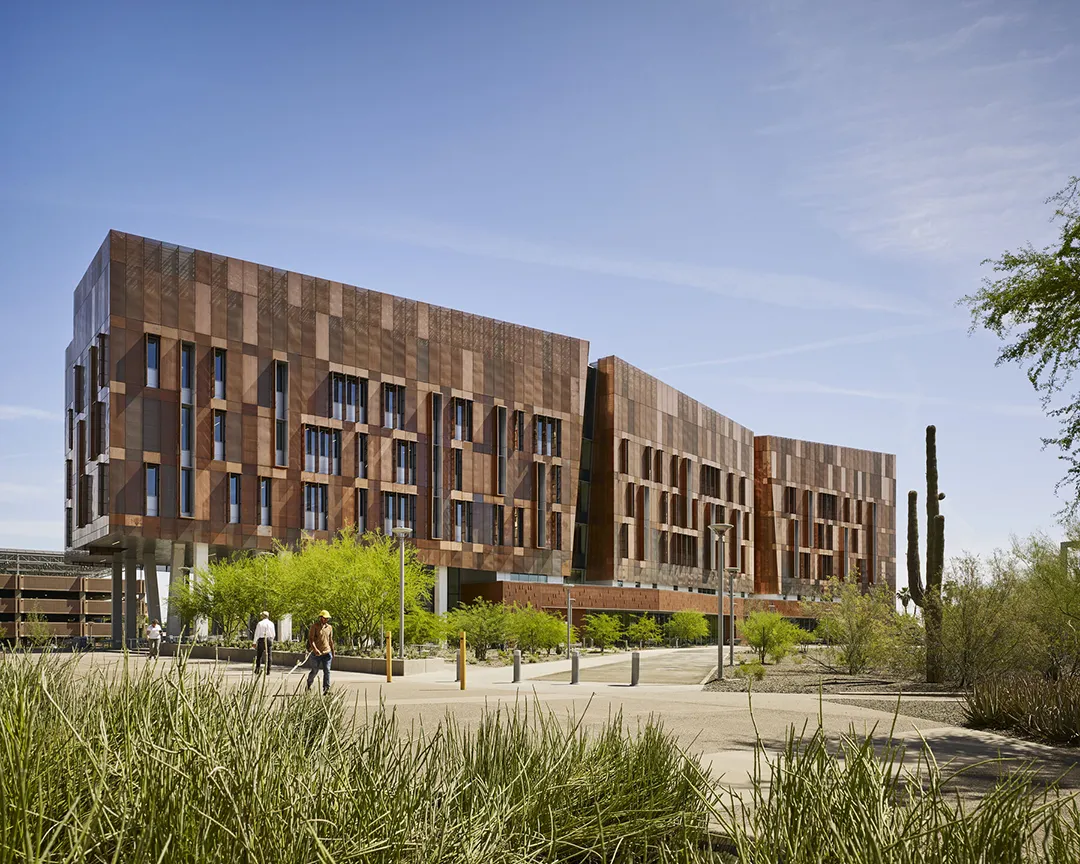
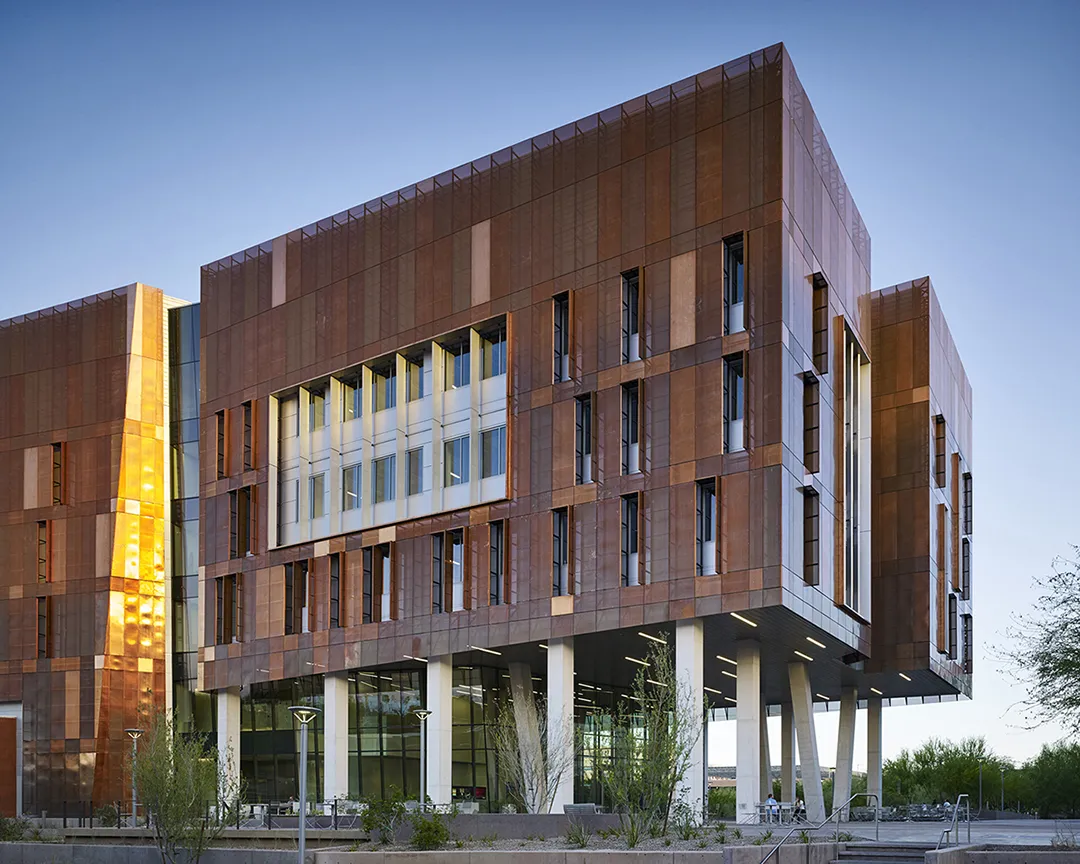
- Biodesign Institute at Arizona State University (Arizona):
A collaboration between BWS Architects and ZGF Architects, the Biodesign Institute is a research center. It embraces sustainable, biophilic principles tailored for Arizona’s desert climate. Landscaped with drought-resistant Arizona plants, the surrounding garden blends seamlessly with the local environment. Expansive windows fill interior spaces with natural light, offering views of native Arizona plants, which provide a calming connection to the local landscape. Inside, the building’s open layout and natural ventilation enhance both comfort and focus.
These examples highlight how thoughtful design and integration of natural elements can turn campus buildings into thriving, nature-inspired spaces that support student and faculty well-being.
The impact of biophilic design vs. sterile campus environment
Imagine a sterile, uninspiring building: rows of fluorescent lights, white walls, and minimal decoration. The air is stagnant, and the absence of greenery or natural light makes the space feel closed in and impersonal. For students spending long hours in classes and study sessions, this setting can be draining, leaving them fatigued and disengaged.
Now, picture walking into a college building filled with biophilic elements: sunlight filters through large windows, casting warm hues across lush indoor plants and wooden seating. The atmosphere is inviting, with areas where students can study surrounded by nature, from cascading green walls to tranquil views of trees outside. This kind of space promotes relaxation, focus, creativity, and connection.
Studies show that biophilic design can significantly impact happiness, health, and performance. Research from the University of Washington indicates that students who view greenery between study sessions report lower stress levels and increased productivity. While studies directly linking biophilic design to student satisfaction on college campuses are emerging, existing research consistently shows that people living near green spaces or with access to nature experience reduced stress, better mood, and increased overall satisfaction.
Transform Your Learning Spaces
Bring nature to your classrooms and beyond.
The importance of natural light and window views
Natural light is a fundamental aspect of biophilic design and is particularly impactful in academic settings where students spend long hours reading, studying, and attending lectures. Here’s why natural light is essential:
- Enhanced focus and mood: Exposure to natural light boosts alertness, mood, and cognitive function. Studies have shown that students in naturally lit classrooms perform better on tests and have increased engagement compared to those in artificially lit spaces.
- Health and well-being: Natural light helps regulate the body’s circadian rhythm, which promotes better sleep and reduces eye strain. For students managing intense schedules, the health benefits of natural light can be a significant advantage.
- Energy efficiency: Large windows and natural lighting reduce the need for artificial light, which conserves energy and aligns with sustainability goals. This design choice supports universities’ sustainability efforts while enhancing student well-being.
When window views showcase greenery (for instance, Arizona plants in a desert landscape) the benefits are further enhanced. These views provide a visual break that reduces fatigue and fosters a connection to the natural world.

Arizona’s unique opportunity for biophilic design and native plants
Arizona’s climate presents both challenges and exciting opportunities for biophilic design. The Arizona desert is loved by its residents, and many college campuses take pride in showcasing its unique beauty. The desert environment, characterized by intense sunlight, heat, and limited rainfall, requires careful selection of native plants and sustainable strategies to create biophilic spaces that thrive. Universities like Arizona State University have pioneered biophilic design by using drought-resistant plants in Arizona, creating stunning landscapes that reflect the desert’s natural beauty while supporting ecological sustainability.
Imagine future Arizona campuses with courtyards shaded by native trees, cooling walkways lined with cacti and agave, and rooftop gardens filled with resilient Arizona plants. These spaces could serve as outdoor study areas year-round, with shade structures or misting systems to keep temperatures comfortable. By prioritizing Arizona plants and sustainable landscaping, universities can create environments that resonate with the local climate and culture.
Arizona campuses are uniquely positioned to model sustainable biophilic design in desert regions. The state’s abundance of sunlight makes natural lighting an ideal choice for energy-efficient buildings, while the rich diversity of plants in Arizona offers endless options for landscaping that supports biodiversity and resilience.
Creating connection through biophilic design and indoor plants
Biophilic design is revolutionizing college campuses, transforming them from sterile spaces into environments that inspire learning, foster well-being, and connect students to nature. Whether it’s through indoor plants, natural light, or views of Arizona plants, these design elements create spaces where students feel engaged, refreshed, and connected to their surroundings.
For Arizona universities, biophilic design is a powerful opportunity to showcase sustainability and innovation. By embracing local plants in Arizona, sustainable building materials, and creative shading solutions, campuses can thrive in harmony with the desert. Biophilic design isn’t just a trend; it’s a commitment to creating educational spaces that respect and celebrate the natural world while enriching the lives of everyone who enters them.
Incorporating biophilic elements into campus environments isn’t just about beautifying buildings—it’s about making campuses healthier, more sustainable, and more inspiring places to learn, explore, and grow.
Bring biophilic design to your campus
Let’s collaborate on sustainable, nature-focused spaces.
